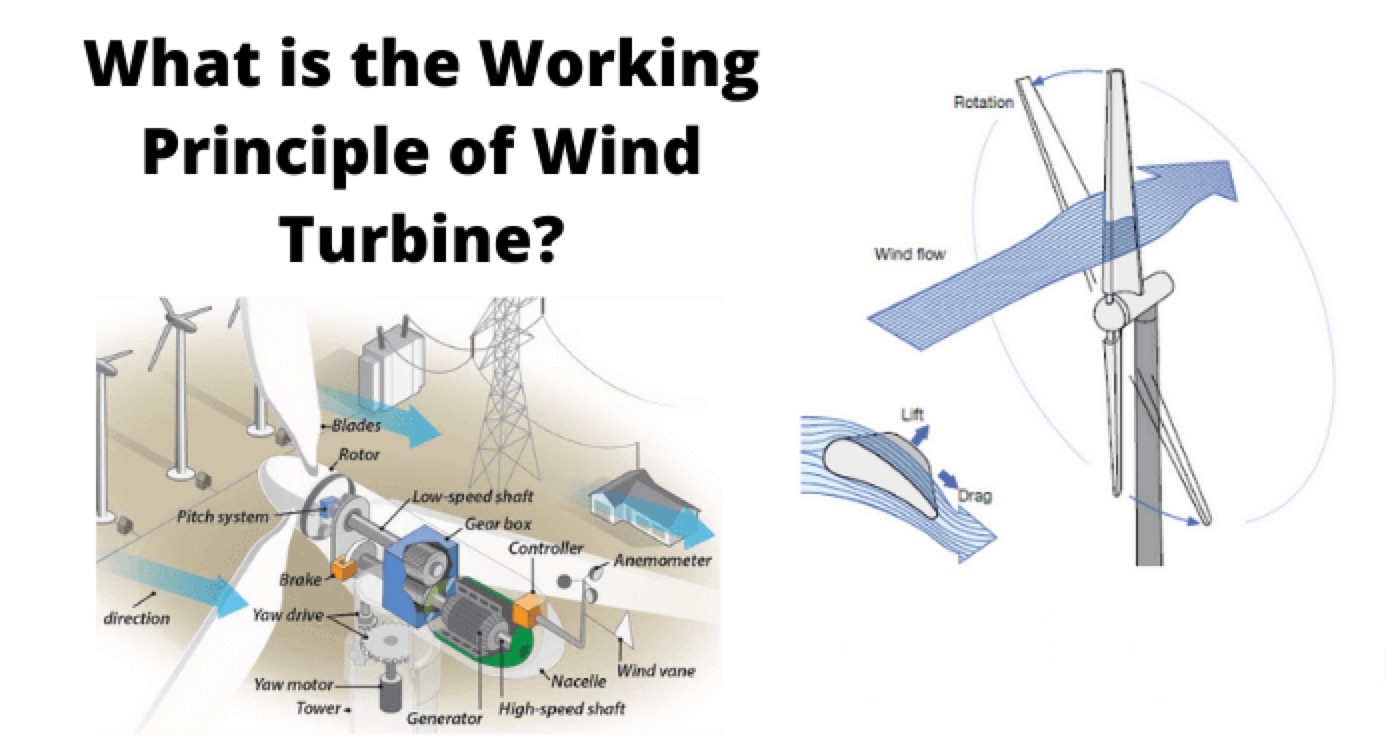Working Principle of Wind Turbine

How Does Wind Turbine Work?
There is an air turbine of large blades attached on the top of a supporting tower of sufficient height. When wind strikes on the turbine blades, the turbine rotates due to the design and alignment of rotor blades. The shaft of the turbine is coupled with an electrical generator. The output of the generator is collected through electric power cables.
Working of Wind Turbine
When the wind strikes the rotor blades, blades start rotating. The turbine rotor is connected to a high-speed gearbox. Gearbox transforms the rotor rotation from low speed to high speed. The high-speed shaft from the gearbox is coupled with the rotor of the generator and hence the electrical generator runs at a higher speed. An exciter is needed to give the required excitation to the magnetic coil of the generator field system so that it can generate the required electricity. The generated voltage at output terminals of the alternator is proportional to both the speed and field flux of the alternator. The speed is governed by wind power which is out of control. Hence to maintain uniformity of the output power from the alternator, excitation must be controlled according to the availability of natural wind power. The exciter current is controlled by a turbine controller which senses the wind speed. Then output voltage of electrical generator(alternator) is given to a rectifier where the alternator output gets rectified to DC. Then this rectified DC output is given to line converter unit to convert it into stabilized AC output which is ultimately fed to either electrical transmission network or transmission grid with the help of step up transformer. An extra units is used to give the power to internal auxiliaries of wind turbine (like motor, battery etc.), this is called Internal Supply Unit.
There are other two control mechanisms attached to a modern big wind turbine.
Controlling the orientation of the turbine blade.
Controlling the orientation of the turbine face.
The orientation of turbine blades is governed from the base hub of the blades. The blades are attached to the central hub with the help of a rotating arrangement through gears and small electric motor or hydraulic rotary system. The system can be electrically or mechanically controlled depending on its design. The blades are swiveled depending upon the speed of the wind. The technique is called pitch control. It provides the best possible orientation of the turbine blades along the direction of the wind to obtain optimized wind power.
The orientation of the nacelle or the entire body of the turbine can follow the direction of changing wind direction to maximize mechanical energy harvesting from the wind. The direction of the wind along with its speed is sensed by an anemometer (automatic speed measuring devices) with wind vanes attached to the back top of the nacelle. The signal is fed back to an electronic microprocessor-based controlling system which governs the yaw motor which rotates the entire nacelle with gearing arrangement to face the air turbine along the direction of the wind.
An internal Block diagram of a wind turbine
Electrical4U is dedicated to the teaching and sharing of all things related to electrical and electronics engineering.













